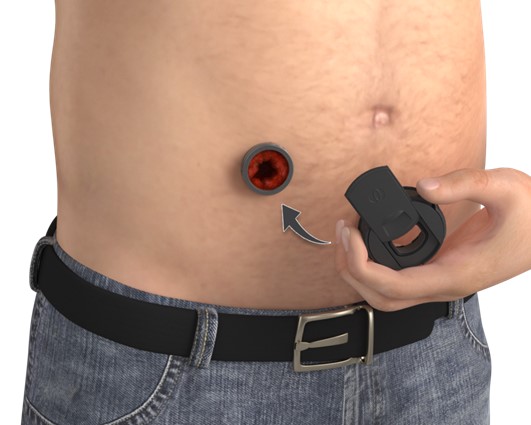A nurse is caring for a client who is 4 hr postoperative following an abdominal surgery and notes that the client's abdominal incision is open and the internal organs are protruding. After contacting the rapid response team, which of the following actions should the nurse take next?
Obtain a set of vital signs.
Flex the client's knees and hips.
Apply a moist saline dressing to the area.
Elevate the head of the client's bed 20°.
The Correct Answer is C
The correct answer is c. Apply a moist saline dressing to the area.
Choice A reason: Obtaining a set of vital signs is important, but it is not the immediate priority in this situation. The vital signs will not address the protruding organs directly.
Choice B reason: Flexing the client’s knees and hips may provide comfort but does not directly address the issue of the open incision and protruding organs.
Choice C reason: Applying a moist saline dressing to the area is the correct action. It helps to protect the protruding organs by keeping them moist and reduces the risk of organ damage or infection. This is the priority action to keep the organs moist and reduce the risk of tissue damage until surgical repair can be done.
Choice D reason: Elevating the head of the client’s bed 20° may be part of the overall care plan, but it is not the immediate priority when dealing with protruding organs from an open abdominal incision.
Nursing Test Bank
Naxlex Comprehensive Predictor Exams
Related Questions
Correct Answer is A
Explanation
The correct answer is choice A, "I will attend a support group to help me handle difficulties when they occur." This statement indicates that the client is accepting the situation and taking proactive steps to manage any difficulties that may arise. Choice B is incorrect because relying on someone else to empty the bag suggests possible denial or avoidance of the situation. Choice C is incorrect because normal bowel movements after an ileostomy may not happen. Choice D is incorrect because it is not related to acceptance of the ileostomy. Choice B is not correct because it shows possible denial or avoidance of the situation. Choice C is not correct because normal bowel movements may not occur. Choice D is not correct because it is not related to acceptance of the ileostomy.

Correct Answer is B
Explanation
This finding could indicate the presence of bile leakage, which can occur following a cholecystectomy. The provider should be notified immediately as the client may require further interventions. Incisional pain, shoulder pain, and a dry and intact abdominal dressing are expected findings in the postoperative period.
Choice A, reporting of shoulder pain, is not the correct answer because this is a common finding post-cholecystectomy, which is often due to the presence of carbon dioxide used during the surgical procedure.
Choice C, incisional pain 5 out of 10 on a pain scale, is not the correct answer because this level of pain is within the expected range for the postoperative period.
Choice D, abdominal dressing dry and intact, is not the correct answer because this is an expected finding in the postoperative period.
Whether you are a student looking to ace your exams or a practicing nurse seeking to enhance your expertise , our nursing education contents will empower you with the confidence and competence to make a difference in the lives of patients and become a respected leader in the healthcare field.
Visit Naxlex, invest in your future and unlock endless possibilities with our unparalleled nursing education contents today
Report Wrong Answer on the Current Question
Do you disagree with the answer? If yes, what is your expected answer? Explain.
Kindly be descriptive with the issue you are facing.
